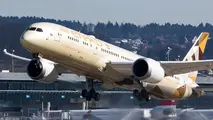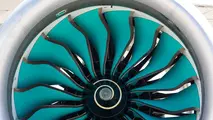Opinion: How Aircraft Seats Became The Industry’s Newest Bottleneck
Supply chain bottlenecks—headlined by forgings, castings, specialty materials and aeroengines—have bedeviled the aerospace industry in the post-COVID-19 era, but the shortage of aircraft seats is an unlikely and underappreciated disruptor of the production ramp-up and aircraft operations.

Supply chain bottlenecks—headlined by forgings, castings, specialty materials and aeroengines—have bedeviled the aerospace industry in the post-COVID-19 era, but the shortage of aircraft seats is an unlikely and underappreciated disruptor of the production ramp-up and aircraft operations.
Aircraft seats might seem straightforward, but they contain hundreds of parts, and their certification process is complicated, which can wreak havoc for manufacturers and airlines. In the first factory-fresh Boeing 787-9 that Lufthansa received in October, for example, 85% of the business-class cabin will remain blocked from passengers due to lack of seats. Air India has acknowledged up to a year’s delay in its cabin retrofit program because certified seats were unavailable on schedule. And American Airlines recorded delivery or operational delays tied to seat supply—notably an Airbus A321XLR that could not enter service in its intended configuration because the planned seats were not delivered in time.
Why the shortage? “Demand for seats was booming, and literally overnight, every interior program was canceled during COVID,” interiors expert Gary Weissel of Tronos Aviation Consulting explains. “Major seat suppliers shuttered facilities and laid off 20-30% of their employees, and following the crisis, the market came roaring back due to pent-up demand from OEMs and airlines.”
Our latest forecast projects the need for 748,000 seats this year, about 40% for new aircraft and the balance for interior retrofits, worth approximately $5 billion. By 2030, demand is expected to grow one-quarter to exceed 907,000 seats. A total of 4.5 million seats worth $34 billion will be needed over the next five years.
The mix of seats in demand is also shifting. Airlines are investing in luxury business and first-class suites with privacy doors, lie-flat beds and high-end finishes. Long-haul single-aisles like the A321neo are flying transoceanic routes that also require premium cabins. Approximately 45% of widebody aircraft now have premium economy cabins. While aircraft OEMs have long pushed for interior standardization to simplify supply chains, most airlines insist on customization for service differentiation—particularly in the front of the cabin.
The supply chains of seat manufacturers are also disjointed. Seats are highly complex assemblies including metal frames, composite components, electrical harnesses, actuators, textiles and inflight entertainment systems. Subtier suppliers are still facing shortages and long lead times. Logistics delays have extended delivery cycles to 18-24 months in some cases.
On top of this, each seat program must be certified for safety and integrated into a specific aircraft layout—a time-consuming process. Many airlines are ordering custom premium or business-class seats that require bespoke design, certification and testing. “Years ago, seat OEMs could design a seat and certify to a range of seat pitches,” Weissel explained. “Now regulators will only allow OEMs to certify for a specific pitch on a specific program.” Regulator shortages at the FAA and European Union Aviation Safety Agency as well as the U.S. government shutdown have added to the certification logjam.
Seat manufacturers have struggled with the new realities. The two largest, Collins Aerospace and Safran, boast a broad portfolio of seating options and enjoy a near duopoly in premium seats after years of consolidation under the former B/E Aerospace and Zodiac brands. Occasionally, they choose not to pursue new business in the current capacity-constrained environment.
The next tier of seating suppliers is seeking to fill the void—particularly in premium seats. Recaro, focused on economy-class seating historically, is doubling its production capacity, while Boeing joint venture Elevate Aircraft Seating (formerly Adient Aerospace) is expanding production capacity in California. Japanese aircraft interiors manufacturer Jamco Corp., recently acquired by Bain Capital, sees a multibillion-dollar opportunity and plans to reenter the business-class seat market it left in 2023. Thompson Aero Seating and Airbus-owned Stelia also are rolling out new products.
While these new investments are welcome, it could take years for aircraft interior suppliers and government regulators to catch up with airline demand. Industry stakeholders would be wise to pay more attention to this surprisingly complex, highly cyclical and often overlooked component of the supply chain.



